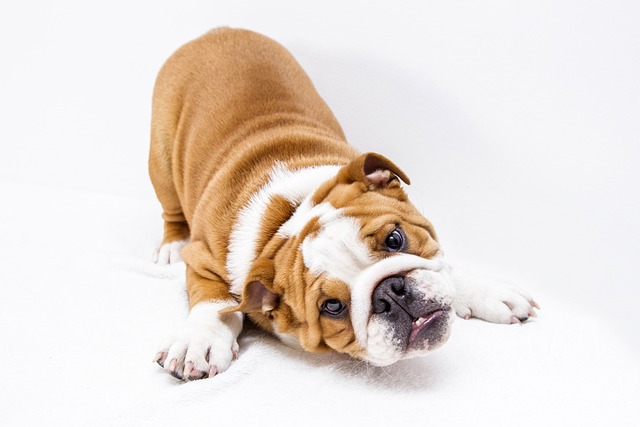
How do i train my dog to be obedient?
Watching your dog dart across the park ignoring your calls isn’t just frustrating—it can put them at risk near busy streets or public spaces.
Picture this: You just brought home your fluffy Golden Doodle, Bailey. You take her out, she does her business, you come back inside... and five minutes later, there's a puddle on your brand-new apartment carpet. Frustrating, right? This common new-puppy headache is exactly where the 10 10 10 rule puppy strategy shines. Forget complex schedules; this practical rule is your simple key to understanding your pup’s tiny bladder and brain: Manage your puppy for 10 seconds after leaving them alone, 10 minutes after any exciting activity, and after 10 minutes of quiet inactivity. It’s less about strict timing, and more about anticipating their needs.
A puppy’s physiology and attention span are vastly different from an adult dog. Their bladders are small (roughly holding 1 hour per month of age, plus one), and their brains are easily distracted. The 10 10 10 rule, championed by trainers like Dr. Sophia Yin, works because it targets the most likely accident triggers based on canine biology and behavior. That frantic play session in your Seattle apartment? It jostles the bladder (trigger 1: activity). When things suddenly calm down, the bladder sensation registers (trigger 2: inactivity). And leaving a young pup unsupervised, even briefly to grab your phone? That’s prime opportunity for an accident they can’t yet control (trigger 3: isolation). Missing these windows means missing their subtle "I need to go" signals.
So, how do you implement this daily? Think prevention, not punishment. Set a reliable puppy potty training schedule anchored by the 10 10 10 rule. After playtime, zoomies, eating, drinking, or waking up (any excitement!), take Bailey out within 10 minutes – don’t wait for obvious signs. After she settles down for a nap or quiet chew, watch the clock; at the 10-minute mark of calm, gently lead her out. Crucially, never leave a young puppy unsupervised in the house. If you need to step away, even for 10 seconds to answer the door, either take her with you or secure her in a safe, easy-to-clean space like an exercise pen with a pee pad. Use high-value treats and enthusiastic praise immediately when she goes outside – instant positive reinforcement methods solidify the desired behavior. Remember Mark from Chicago? His Mini Schnauzer kept having accidents after naps. By proactively taking her out at the 8-9 minute mark of quiet rest (before the 10-minute bladder signal hit), accidents dropped dramatically within days.

While mastering the 10 10 10 rule drastically reduces accidents, it fits within the bigger picture of responsible US dog ownership. Positive reinforcement for successful potty trips isn't just effective; it’s the gold standard aligned with modern animal welfare ethics. Yelling, rubbing a puppy's nose in an accident, or any punishment is culturally unacceptable, damages trust, and simply doesn’t teach them where to go. Legally, before those crucial socialization walks around the neighborhood park, ensure Bailey is up-to-date on her vaccinations, especially rabies (mandatory in all states!), and always carry proof. And that successful outdoor potty? Always scoop it immediately – it’s not just courtesy; it’s law in virtually every US city and town (fines in places like Boston or Los Angeles are serious!). Apartment dwellers, be extra vigilant with the 10 10 10 rule; quick access to the designated potty spot is vital. Use enzymatic cleaners indoors to eliminate odors completely, preventing repeat offenses in the same spot. Practice polite leash manners during potty trips; letting Bailey strain on the leash disrupts the neighborhood walk and can be unsafe. Keep her leashed in public areas unless in a clearly marked off-leash zone, respecting others' space.
The 10 10 10 rule is a game-changer for new puppy parents. By proactively managing those critical moments – after activity, after calm, and before isolation – you dramatically reduce accidents and frustration. It builds a clear communication bridge using positive reinforcement methods, teaching Bailey where it’s wonderful to go, strengthening your bond, and paving the way for a clean, happy home and a well-adjusted community member.

Watching your dog dart across the park ignoring your calls isn’t just frustrating—it can put them at risk near busy streets or public spaces.

New puppy owners often find themselves rushing to clean up accidents before they set in, and that’s where puppy pad training becomes a game-changer.

If you've noticed your dog's waistline disappearing and your veterinarian has mentioned those few extra pounds, your first instinct might be to simply reduce the amount of food in their bowl.

Training a dog to use a designated spot indoors isn’t as daunting as many new owners fear, but it does take consistency and an understanding of your pet’s needs.

That moment of dread on a walk is all too familiar for many new dog owners. You see another dog approaching down the sidewalk of your neighborhood

If the sight of another dog on your neighborhood walk makes your heart sink as your own dog erupts into a frenzy of barking and lunging, you're not alone.